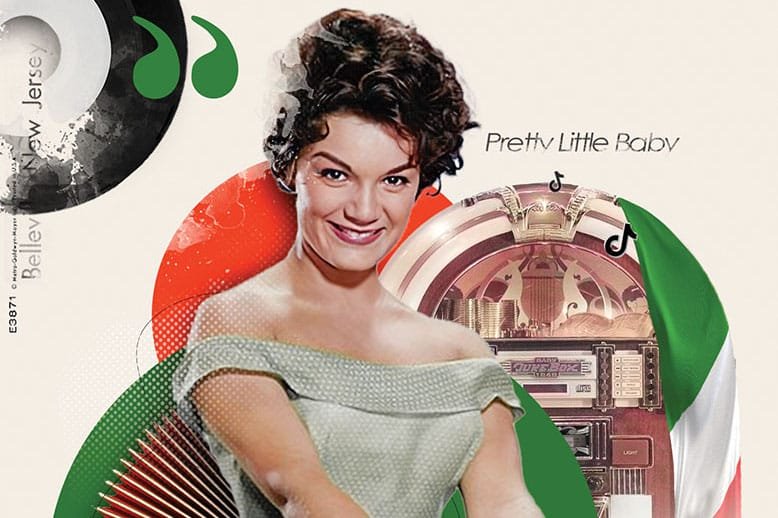

Illustration: Nadia Radic
In 1958, 20-year-old Connie Francis appeared on Dick Clark’s American Bandstand and sang “Who’s Sorry Now?” With her wide-set eyes, pert nose, and black, shoulder-length hair, she looked like the Italian girl next door—the kind you’d want to bring home to your family. Her voice was smooth, clear, and broke at times, as if she were about to cry. The song immediately jumped to number 4 on Billboard’s Hot 100 and set the pace for a string of hits for the next several years.
In fact, Francis became the most popular female singer in America at the time, releasing hits such as “Everybody’s Somebody’s Fool,” “Lipstick on Your Collar,” and “Where the Boys Are,” for which Dick Clark characterized her as “the girl with the million-dollar cry.”
“The fact that a girl could sing rock and roll then was outrageous,” Francis once told me. I had become enamored of the music of my parents’ generation and I was interviewing Francis for a book I was writing in 2010 on the great Italian American singers. Speaking with her, her voice was as soft and gentle as when she sang, yet she was also sharp and direct. She was not at all the innocent-seeming girl we heard in her songs; she possessed a keen understanding of her role in the music world, which changed in the mid-1950s, seemingly overnight. “Girls tossed off their bobby socks for Capri pants,” she explained.
Francis was born Concetta Rosa Maria Franconero in the Ironbound section of Newark in 1937. Her grandparents, who had emigrated from Reggio Calabria, Italy, “lived on a farm where Newark Airport is now,” she said. Her family moved to Brooklyn for a few years, but they returned to Jersey, and she graduated from Belleville High School in 1955. She immediately started her music career, managed in part by her father, who had first put an accordion in her hands.
“Sometimes I think my father wanted me to be an accordion player so much because it was second only to the bassoon as the most asexual instrument ever known to man,” she said, laughing. Her protective father selected many of her songs and accompanied her on tour. (At one point, he chased her then-boyfriend, singer Bobby Darin, out of a concert hall with a gun, when he learned that the two were planning to get married.)
It was also her father who encouraged her to record one of the songs she would become best known for, “Mama,” about longing for one’s mother. The song introduced her to older audiences, who would become lifelong fans.
Connie Francis died in July at age 87. However, just two months earlier, an obscure song of hers had resurfaced—one that she said in interviews she didn’t even remember recording. “Pretty Little Baby” went viral on TikTok, and Gen Z started singing along. I adored her, and I was heartened to know that she had reached a new generation.
Mark Rotella, director of the Coccia Institute at Montclair State University, is the author of Amore: The Story of Italian American Song.








